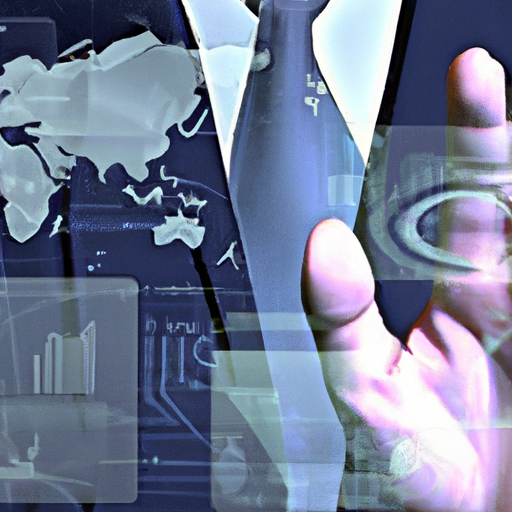Human Resources Technology Trends
In this article, you will explore the latest trends in human resources technology. From AI-powered recruitment tools to employee engagement platforms, the world of HR tech is constantly evolving to meet the needs of modern businesses. Discover how these advancements are revolutionizing the way organizations attract, hire, and retain talent, maximizing productivity and fostering a positive work environment. Stay ahead of the curve and gain valuable insights into the cutting-edge technologies shaping the future of HR.
Table of Contents
Automation
Automation is revolutionizing the world of human resources, simplifying and streamlining various processes. Two key technologies driving this transformation are Robotic Process Automation (RPA) and Artificial Intelligence (AI). RPA involves the use of software robots or “bots” to automate repetitive and rule-based tasks. These bots can perform data entry, generate reports, and even interact with other systems, freeing up HR professionals to focus on more strategic initiatives.
AI, on the other hand, goes beyond RPA and enables machines to mimic human intelligence. It encompasses various technologies such as natural language processing, machine learning, and computer vision. AI-powered HR systems can analyze vast amounts of data to identify patterns, make predictions, and provide valuable insights for decision-making. For example, AI algorithms can help in screening job applications, identifying the best candidates based on specific criteria.
Another subset of AI that is gaining traction in HR is Machine Learning (ML). ML algorithms can learn from data and improve their performance over time without being explicitly programmed. This technology can be used to develop predictive models that forecast employee attrition, identify training needs, or even detect potential compliance issues.
Employee Engagement
Employee engagement is a crucial aspect of HR, as it directly impacts productivity, job satisfaction, and overall organizational success. To foster engagement, HR teams are leveraging technology in innovative ways. One such approach is gamification, which involves adding game elements to work-related tasks to make them more engaging and enjoyable. For example, organizations might create leaderboards, offer rewards, or implement challenges to motivate employees and encourage healthy competition.
Personalized training and development programs are also gaining popularity. By leveraging technology, HR departments can create tailored learning experiences for employees based on their individual needs and skills gaps. Whether it’s through e-learning platforms, virtual reality simulations, or personalized learning paths, employees can access training resources that are relevant and engaging.
Mobile apps are becoming increasingly essential for employee engagement. These apps provide a convenient platform for employees to access company news, communicate with colleagues, track their performance, and participate in organizational initiatives. With the widespread use of smartphones, mobile apps offer flexibility and accessibility, bridging the communication gap between employees and HR departments.
Data Analytics
Data analytics is transforming the way HR operates, enabling evidence-based decision-making and strategic workforce planning. Predictive analytics allows HR professionals to use historical data and statistical algorithms to forecast future trends. By analyzing factors such as employee turnover, performance, and engagement, organizations can proactively address talent-related challenges and make informed decisions about recruitment, training, and retention.
People analytics, also known as HR analytics, focuses on analyzing employee data to gain insights into workforce behavior and trends. Through the use of advanced analytics tools, HR professionals can uncover patterns and correlations between various HR metrics and business outcomes. This information can help in optimizing HR strategies, improving employee experience, and enhancing overall organizational performance.
HR metrics and dashboards provide a visual representation of key HR metrics and performance indicators. These tools consolidate data from various HR systems and present it in a user-friendly format, allowing HR professionals to quickly identify trends, track progress towards goals, and make data-driven decisions. Metrics such as employee satisfaction, turnover rate, and training effectiveness can be monitored in real-time to understand and address HR-related issues.
Talent Acquisition
Finding and attracting top talent is a perennial challenge for HR departments. Fortunately, advances in technology have brought forth several solutions to optimize the talent acquisition process. One such solution is the Applicant Tracking System (ATS). ATS automates the recruitment process, from receiving applications to shortlisting candidates, scheduling interviews, and managing communication. These systems help streamline recruitment workflows, improve candidate experience, and ensure fair and efficient hiring practices.
Video interviews have gained significant popularity, especially in remote and global hiring scenarios. Instead of conducting in-person interviews, HR teams can now leverage video interview platforms to assess candidates remotely. This saves time and resources while providing a more convenient process for both candidates and interviewers. Video interviews also enable HR professionals to conduct virtual assessments and maintain consistency in candidate evaluation.
Job aggregators have revolutionized the way job seekers and employers connect. These platforms consolidate job postings from various sources and present them in one place for candidates to search and apply. For employers, job aggregators offer a broader reach and increased visibility for their job openings. This technology simplifies the recruitment process for both parties, improving efficiency and helping organizations find the right talent more effectively.
Remote Work Solutions
The COVID-19 pandemic has accelerated the adoption of remote work solutions, making them an essential part of HR technology trends. Virtual collaboration tools enable employees to collaborate, communicate, and work together seamlessly, regardless of their physical locations. These tools provide features such as video conferencing, instant messaging, file sharing, and document collaboration, replicating the experience of in-person collaboration.
Remote onboarding and training have become critical to ensure new hires are successfully integrated into the organization. With the help of technology, HR departments can deliver onboarding materials, training modules, and orientation sessions remotely. Virtual onboarding platforms allow new employees to access resources, complete necessary paperwork, and participate in training activities from anywhere, eliminating the need for physical presence.
Time and attendance tracking is another remote work solution that HR departments are implementing. With employees working from different locations, organizations need a reliable system to track their working hours accurately. Time and attendance tracking software, often integrated with virtual collaboration tools, enables employees to log their working hours, request time off, and manage their schedules. This technology ensures transparency and accountability even in a remote work environment.
Employee Self-Service
Employee self-service is all about empowering employees to manage their HR-related tasks independently, reducing administrative burden and improving efficiency. Employee portals serve as a centralized platform where employees can access important HR information, update personal details, view pay stubs, and request time off. By giving employees control over their data and HR processes, organizations foster a sense of ownership and engagement.
Chatbots and virtual assistants are becoming increasingly common in HR departments. These AI-powered tools provide employees with immediate access to HR information and support. Chatbots can answer frequently asked questions, assist with benefits enrollment, guide employees through HR policies, and even facilitate the initiation of HR processes such as onboarding or employee offboarding. These virtual assistants offer a convenient and efficient way for employees to obtain HR-related assistance.
HR helpdesk software streamlines the process of handling employee inquiries, requests, and issues. It allows HR teams to manage and track employee tickets, ensuring timely responses and resolutions. HR professionals can prioritize and assign tickets, track communication history, and generate reports for analysis. HR helpdesk software ensures that employee concerns are addressed promptly, enhancing employee experience and satisfaction.
Performance Management
Performance management is crucial for driving employee productivity, development, and growth. Technology plays a vital role in streamlining and enhancing performance management processes. Continuous feedback platforms enable real-time feedback and coaching between managers and employees. These platforms facilitate ongoing performance discussions, allowing managers to provide timely guidance and recognition. Continuous feedback platforms shift the focus from annual performance reviews to continuous improvement and development.
Real-time performance tracking tools provide managers with insights into employee performance on an ongoing basis. By setting clear goals, managers can track progress, provide feedback, and make data-driven decisions. These tools ensure that employees and managers are aligned in their understanding of performance expectations and enable timely interventions if performance issues arise.
Goal management systems are designed to help organizations set, track, and manage performance goals effectively. These systems facilitate goal setting, provide visibility into goal progress, and allow for timely adjustments and updates. By aligning individual goals with organizational objectives, goal management systems ensure that employees are working towards shared outcomes. These systems promote a transparent and goal-oriented culture within the organization.
Diverse Workforce Solutions
Diversity and inclusion have become paramount in creating an inclusive and equitable workplace. HR technology offers several solutions to support organizations in their diversity and inclusion efforts. Diversity and inclusion tracking tools enable organizations to measure and monitor diversity-related metrics. These tools provide insights into workforce demographics, representation, and inclusion efforts, helping organizations identify areas of improvement and make data-driven decisions.
Bias detection and mitigation tools leverage AI algorithms to identify and mitigate biases in various HR processes. Whether it’s in job postings, candidate screening, or performance evaluations, these tools help ensure fairness and reduce the impact of unconscious biases. By creating unbiased and inclusive HR processes, organizations can attract and retain diverse talent and foster a more inclusive work environment.
Language translation tools assist organizations in overcoming language barriers and promoting effective communication among employees from different linguistic backgrounds. These tools can translate written content, facilitate multilingual communication, and even provide real-time translation during video conferences. Language translation tools enable organizations to create a more inclusive and globally connected workforce.
HR Data Security
Data security is a critical concern for HR departments, as they handle sensitive employee information. HR technology offers various measures to ensure the security and integrity of HR data. Cybersecurity measures involve implementing safeguards to protect HR systems from cyber threats, such as malware, unauthorized access, and data breaches. These measures include firewall protection, intrusion detection systems, and regular security audits.
Data encryption is another essential security measure to protect HR data. Encryption involves converting sensitive information into unreadable code, preventing unauthorized access. HR systems should use encryption algorithms to safeguard data at rest and in transit. This ensures that even in the event of a data breach, the stolen data remains unusable to unauthorized individuals.
Access controls play a vital role in HR data security by regulating user access to HR systems and data. User authentication, authorization levels, and role-based access controls ensure that only authorized individuals can access and modify HR data. Access controls should be regularly reviewed and updated to align with organizational security policies and guidelines.
HR Service Delivery
Efficient HR service delivery is crucial for providing quality support to employees and optimizing HR processes. Case management systems streamline the handling of employee inquiries, issues, and requests. These systems allow HR professionals to assign, track, and manage cases, ensuring that each case receives prompt attention and resolution. Additionally, case management systems provide a centralized repository of case-related information, allowing HR professionals to monitor case history and generate reports.
Knowledge management solutions store and organize HR-related knowledge, policies, and procedures. With these solutions, HR professionals can easily access and share crucial information with employees. By centralizing knowledge and making it easily accessible, organizations ensure consistency in HR communication and promote self-service, reducing the need for repetitive inquiries.
Service request automation tools automate routine HR service requests, such as leave requests, benefits enrollment, or address updates. Employees can submit and track their requests online, reducing dependency on manual processes. These automation tools improve efficiency, accuracy, and employee experience by eliminating manual paperwork and reducing processing times.
In conclusion, human resources technology trends are transforming the HR landscape, offering innovative solutions to streamline processes, engage employees, leverage data, attract talent, support remote work, enable self-service, enhance performance management, promote diversity, ensure data security, and optimize HR service delivery. By harnessing the power of automation, artificial intelligence, data analytics, and various other technologies, HR departments can elevate their strategic impact, drive employee satisfaction, and contribute to organizational success.






